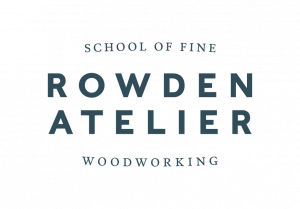Where two cabinetmakers meet, talk invariably turns to finishing. For this is the process of achieving the all important few microns of top surface. And boy do you get in a lather about it, or at least we should but sadly in my view so much surface finishing comes down to the application of two or three coats of water borne lacquer cut back between coats with 320 lubrisil and the final cost finished with 0000 wire wool and maybe if time allows, a bit of wax. This as far as I can see is the standard finish applied to most contemporary pieces of furniture, including some of my own. I’m sure of this because at any exhibition showing more than two or three modern pieces the air is filled with the heavy aroma of lacquer solvents coming from newly polished pieces. I can understand why this is such a widely held practice for it is so easy. I recently had to protect a part of one of my recent pieces from wear and water marking and general hard use so lacquer was the obvious answer. But I must admit it does irritate me the way lacquer is called lacquer and not plastic. It’s the perfect marketing ploy. You associate water borne or solvent-borne plastic coating with Japanese lacquer which is one of the most labour intensive natural and beautiful surfaces known to man. Lets not call it lacquer, no lets not associate it with this process lets call it what it really is – plastic…
The only thing I can see on my beautiful pearwood surface is my own reflection so all you do – whiz it over with 0000 wire wool and merely finish it off with a burnishing cream.
First a sanding sealing coat. This is a water borne melamine with a certain amount of mica or pumice put in the polish to help fill the grain and build the polish quickly. It also makes the resulting surface easier to cut back. Two coats of this and boy does it cut back easily, any drips and dribbles sand off a treat then two more coats of the clear lacquer – sorry plastic. By now the surface is really buzzing. The only thing I can see on my beautiful pearwood surface is my own reflection so all you do – whiz it over with 0000 wire wool and merely finish it off with a burnishing cream. All of this is a doddle but the resultant surface I think still isn’t doing my pearwood any justice, the surface is somehow counterfeit, it looks OK and it feels sort of right but I still feel uncomfortable about it . It is however doing a great job of protecting my pearwood from the ravages of time, vacuum cleaners and 20th century children which is an important consideration.
However, lacquer is not, thank God, the only polish and this is where I urge you all to consider the alternatives in a situation where wear and abuse by your client would not warrant showing them a yellow card. Consider the benefits of using transparent shellac. This is a polish that is considerably more revealing than even the clearest lacquer – sorry plastic. It also has the benefit of feeling nicer, being a natural product – I believe exuded from the shells of the lack beetle I use this finish on surfaces that will not be subjected to heavy wear, such as chairs, dressing tables, side tables, boardroom furniture.
For solid wood furniture especially oaks and ash, think about using oils. Modern oil polishes such as Danish oil dry much harder than old linseed oil polishes, whilst retaining much of the surface beauty. The trick here is to put the polish into the bare timber before applying the oil. That means sanding and sanding and sanding. After building up the oiled surface carefully and allowing it to dry, perhaps in the clients home for as long as 6 – 8 months, oil polished surfaces can acquire a surface resistance which is far greater than is commonly believed.
In conclusion I urge you to consider the surface of your piece of furniture as your most important advocate for what you are doing. Consider what the surface is saying and understand that any confusion in what the surface is saying and what the piece is really doing will cause anxiety. Consider the shine can enhance as well as confuse the way your piece is perceived. Consider how the touch and smell can reinforce the message that your surface is advocating. And finally just consider appropriate finishes in different situations and remember playmates all that glisters is not plastic.
